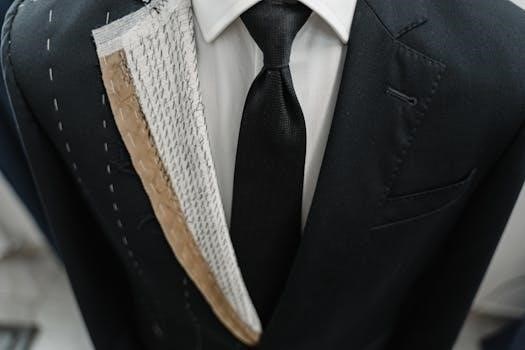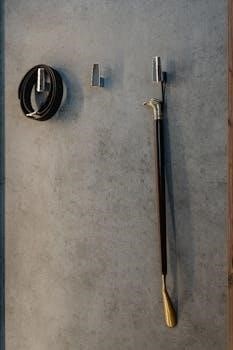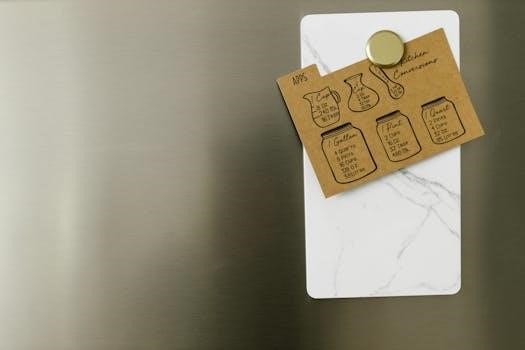jacket measurement guide
- Published
- in Guide
Jacket Measurement Guide⁚ A Comprehensive Plan
Embark on a journey to perfectly fitting jackets with our comprehensive measurement guide! This plan will equip you with the knowledge to accurately measure yourself or a garment‚ ensuring a dapper and confident look. We’ll cover essential tools‚ techniques‚ and size chart interpretation.
Welcome to the world of accurate jacket measurement! Achieving the perfect fit begins with understanding the importance of precise measurements. Whether you’re purchasing a suit jacket‚ leather jacket‚ or casual coat‚ knowing your measurements is crucial for a comfortable and stylish fit. This guide will provide you with the necessary tools and techniques to confidently measure yourself or a jacket.
We’ll explore various measurements‚ including chest‚ length‚ sleeve‚ and shoulder width‚ ensuring you capture every detail for a well-fitted garment. Suit sizing is based on your chest measurement. Understanding how to interpret size charts from different brands is also key‚ as sizing can vary significantly. This introduction sets the stage for a comprehensive exploration of jacket measurement‚ empowering you to make informed purchasing decisions and achieve a flawless silhouette. We aim to make sure those who are looking for jackets should be able to measure correctly.
Why Accurate Measurements Matter
Accurate measurements are paramount when selecting a jacket‚ directly influencing comfort‚ appearance‚ and overall satisfaction. A well-fitting jacket enhances your silhouette‚ projecting confidence and style. Conversely‚ an ill-fitting jacket can appear sloppy and uncomfortable‚ detracting from your overall look. Consider the impact on sleeve length – too short and it looks awkward‚ too long and it impairs movement.
Similarly‚ a jacket that’s too tight across the chest restricts movement‚ while one that’s too loose lacks shape and definition. Online shopping for jackets becomes significantly easier and more reliable with precise measurements. Instead of relying solely on generic size charts‚ you can compare your measurements to the garment’s specifications‚ minimizing the risk of returns. Accurate measurements also save time and money by preventing the purchase of incorrect sizes. Ultimately‚ understanding your measurements empowers you to make informed decisions‚ ensuring a perfect fit every time and a dapper first impression.
Essential Tools for Measuring
To obtain accurate jacket measurements‚ gathering the right tools is crucial. The most essential tool is a flexible measuring tape‚ preferably made of cloth or vinyl‚ as it conforms easily to the body’s curves. Ensure your measuring tape is in good condition‚ without any stretches or tears‚ to guarantee precise readings. A full-length mirror is another vital tool‚ allowing you to observe your posture and ensure the tape measure is positioned correctly.
For measuring shoulder width and jacket length‚ having a helper can be beneficial‚ especially for achieving accurate back measurements. If measuring alone‚ try using a wall as a reference point to maintain a straight line. A notepad and pen are also helpful for recording measurements as you go‚ preventing errors and ensuring you have a reference for comparing sizes. Consider using a sizing tool or app for assistance with the measuring process‚ which includes step-by-step videos‚ a sizing tool‚ as well as corresponding jacket fitting guides.
Measuring Your Chest
Accurately measuring your chest is the foundation for determining the correct jacket size. Begin by standing upright with your arms relaxed at your sides. Ensure you are wearing a lightweight shirt or undergarment to avoid adding unnecessary bulk to the measurement. Take a flexible measuring tape and wrap it around the fullest part of your chest‚ typically just under your armpits.
The tape measure should be snug but not too tight‚ allowing for comfortable movement. Ensure the tape is level all the way around your body‚ both in the front and back. Breathe normally and avoid holding your breath‚ as this can affect the accuracy of the measurement. Record the measurement in inches or centimeters‚ depending on the sizing chart you’ll be using. For a well-fitting jacket‚ you want to have at least 2-3 inches of space in the chest. If your chest measures at 40‚ then you should select the jacket size that corresponds.

Measuring Jacket Length
Determining the appropriate jacket length is crucial for achieving a balanced and stylish silhouette. Jacket length is typically measured from the highest point of the shoulder‚ where the shoulder seam meets the collar‚ down to the hem of the jacket. Stand straight with your arms relaxed at your sides. Have a friend or tailor assist you with this measurement for optimal accuracy.
For a standard blazer or coat‚ a good rule of thumb is to measure down to the top of the thigh. However‚ this can vary depending on personal preference and the specific style of the jacket. Some prefer a cropped jacket‚ while others opt for a longer‚ more traditional length. Consider the overall look you’re aiming for and the type of garments you’ll be wearing the jacket with. At Turnbull & Asser‚ we produce a variety of outerwear styles including. Be sure to consult the brand’s specific size chart for length guidelines.
Measuring Sleeve Length
Accurate sleeve length is essential for both comfort and style. To measure sleeve length‚ start at the shoulder seam where the sleeve attaches to the jacket. Measure down the outside of the sleeve‚ over the slightly bent elbow‚ to the point where you want the sleeve to end. Ideally‚ the sleeve should reach approximately to the break of your wrist‚ allowing about half an inch of shirt cuff to show.
Alternatively‚ measure from your shoulder seam‚ with your arm slightly bent‚ to the tip of your wrist. For a more precise fit‚ it’s best to have someone assist you with this measurement while you’re wearing a shirt. Keep in mind that sleeve length can vary depending on the style of the jacket and personal preference. Some prefer a slightly shorter sleeve for a more modern look‚ while others prefer a longer sleeve for added warmth or coverage; Always refer to the brand’s size chart for specific sleeve length guidelines.
Measuring Shoulder Width
Shoulder width is a critical measurement for a well-fitting jacket. Incorrect shoulder width can lead to discomfort and an unflattering silhouette. To measure shoulder width‚ locate the two points where your shoulder meets your arm. These are the natural endpoints of your shoulder line. Using a flexible measuring tape‚ measure the distance straight across your back between these two points.

It’s best to have someone assist you with this measurement to ensure accuracy. Stand with your arms relaxed at your sides. The measuring tape should be held taut but not too tight. This measurement is the foundation for determining the correct jacket size. When considering shoulder width‚ also factor in the jacket’s construction and style. A structured jacket may require a more precise shoulder fit than a more relaxed‚ unstructured style. Always compare your shoulder width measurement to the brand’s specific size chart to ensure a perfect fit. Remember that a well-fitted shoulder provides both comfort and a polished appearance.
Understanding Size Charts
Size charts are essential tools for determining the right jacket size. However‚ they can vary significantly between brands and even styles. Learning how to interpret these charts accurately is crucial for a successful purchase‚ especially when buying online. Most size charts include measurements for chest‚ shoulder width‚ sleeve length‚ and jacket length. Compare your personal measurements to the chart’s specifications to find your corresponding size.
Pay close attention to whether the chart refers to body measurements or garment measurements. Body measurements indicate the size of your body‚ while garment measurements refer to the actual size of the jacket. For a comfortable fit‚ especially in tailored jackets‚ you’ll generally want a jacket that’s slightly larger than your body measurements. Some size charts also include international size conversions (e.g.‚ US‚ EU‚ UK). Always prioritize the specific measurements provided over generic size labels. Be aware that women’s size charts often differ from men’s‚ reflecting variations in body shape.
Men’s Jacket Size Chart Example
To illustrate how size charts work‚ here’s a hypothetical example for men’s jackets. Note that specific measurements can vary between brands‚ so always consult the individual brand’s chart when available.

Size | Chest (inches) | Shoulder (inches) | Sleeve (inches) | Jacket Length (inches)
S | 36-38 | 17-17.5 | 32-33 | 28
M | 40-42 | 18-18.5 | 33-34 | 29
L | 44-46 | 19-19.5 | 34-35 | 30
XL | 48-50 | 20-20.5 | 35-36 | 31
XXL | 52-54 | 21-21.5 | 36-37 | 32
In this example‚ if your chest measurement is 42 inches‚ you would likely fall into size M. However‚ also consider your shoulder width and sleeve length. If your shoulder width is closer to 19 inches‚ you might prefer a size L for a more comfortable fit across the shoulders. The jacket length is also a matter of personal preference and style. Use this example as a guide‚ but always prioritize the specific chart provided by the brand you’re purchasing from.
Women’s Jacket Size Chart Considerations
Women’s jacket sizing presents unique considerations compared to men’s‚ primarily due to the diverse range of body shapes and styles. While chest measurement remains crucial‚ other factors like bust‚ waist‚ and hip measurements play significant roles in achieving a proper fit. Many women’s jackets are designed to be more form-fitting‚ requiring attention to how the jacket drapes across the torso and hips.
Size charts for women’s jackets often include a bust measurement‚ taken around the fullest part of the chest‚ and a waist measurement‚ taken at the natural waistline. Some charts also include hip measurements‚ particularly for longer jackets or coats. When comparing your measurements to a size chart‚ prioritize the bust measurement‚ followed by the waist and hip measurements‚ if applicable.
Furthermore‚ consider the style of the jacket. A tailored blazer will have a different fit than a relaxed bomber jacket. Pay attention to the jacket’s description and any fit notes provided by the retailer. Remember that women’s sizing can vary considerably between brands‚ making it even more crucial to consult the specific size chart for each brand and style.
Tips for a Perfect Fit
Achieving a perfect jacket fit involves more than just matching measurements to a size chart. Consider these crucial tips for a silhouette that enhances your appearance and ensures comfort. Always prioritize shoulder fit; the shoulder seams should lie flat on your shoulders without extending beyond or feeling too tight. A well-fitting shoulder is paramount‚ as alterations in this area are often difficult and costly.
Next‚ evaluate the chest and waist. For a comfortable fit‚ allow at least 2-3 inches of space in the chest and waist. You should be able to button the jacket easily without any pulling or straining. The jacket should gently hug your torso‚ providing a defined shape without feeling restrictive. Observe the jacket’s length; for a standard blazer or coat‚ the bottom hem should typically reach the top of your thigh.
Sleeve length is another vital aspect. The sleeves should end approximately at your wrist bone‚ allowing about half an inch of your shirt cuff to be visible. Lastly‚ remember that fabric type affects fit. Stiffer fabrics may require slightly more room‚ while more flexible materials can offer a closer fit. When in doubt‚ err on the side of slightly larger‚ as taking a jacket in is generally easier than letting it out.
Seeking Professional Assistance
While this guide provides comprehensive instructions for measuring a jacket‚ seeking professional assistance from a tailor or experienced menswear specialist can be invaluable‚ especially if you lack confidence in your self-measuring abilities. A professional can accurately assess your body measurements and provide personalized recommendations based on your unique physique and style preferences.
Visiting a brick-and-mortar menswear store offers the advantage of expert guidance and the opportunity to try on different jacket styles and sizes. A tailor can identify subtle fit issues that may not be apparent when measuring yourself and suggest alterations to achieve a truly customized fit. Furthermore‚ professionals possess specialized tools and techniques to ensure precise measurements‚ minimizing the risk of errors.
If you are purchasing a custom-made jacket‚ consulting a tailor is essential. They will guide you through the selection of fabrics‚ styles‚ and design details‚ ensuring that the final product meets your exact specifications. Even if you are buying a ready-to-wear jacket‚ a tailor can make alterations to improve the fit‚ such as adjusting the sleeves‚ taking in the waist‚ or shortening the length. Don’t hesitate to invest in professional assistance; a well-fitted jacket is a worthwhile investment that will enhance your appearance and confidence.

